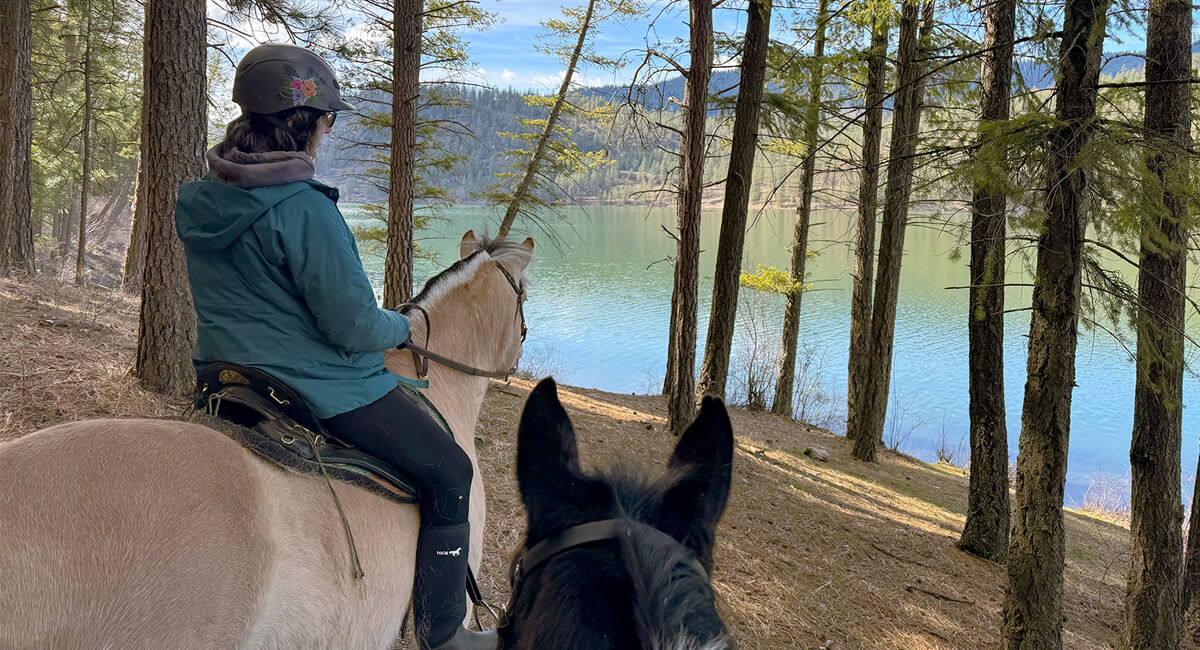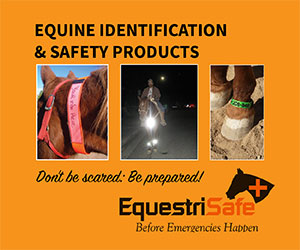You’ll Know When It’s the Right Time to Remount
The old saying is that you should always “get back on the horse”. I did get back on my horse the day I fell off during a moment of chaos when riding with friends. I got back on because I had made a commitment to ride, and I always follow through with my commitments. I was going to ride despite the bothersome and intense pain in my wrist. But then I noticed my riding glove getting tighter and tighter as my right wrist swelled. I soon dismounted and led my horse back to the trailer to load him and haul home with one working hand.
After finally removing the brace and starting physical therapy, I had a second moment of freakishly bad luck. My foot had fallen asleep, and I started to walk on it anyway (note to self: don’t do this). I fell backwards catching myself with both hands. My right hand in particular kept hurting. After ignoring the new pain for several days, I finally made it to the doctor’s office. I had broken the same arm again, in a different spot.
Once I got out of my second brace, I think my physical therapist enjoyed working with me. Every time she gave me a new exercise or bent my weak arm in a new way, I would compare the movement to what a horse or a rider does. We are always trying to sit straight so the horse is straight, and working to strengthen the weak side of the horse. The whole broken arm ordeal made me empathetic to what a horse must feel when injured, especially when coming back after an injury.
Altogether, I was unable to ride or do many of my usual outside activities for more than five months. My family helped a lot, and I learned how to do a lot of things with one hand. My horse was delighted with his time off, he still got his food, and he had unlimited time to pick on his pasture mate.
The Unexpected Benefits of Injury and Time Off
After all that time not riding, I wasn’t sure if I would be worried when I mounted up again. Would my horse be nervous? Would I be nervous and transfer that anxiety to him? In preparation, I revisited groundwork and spent two days with a trainer friend to make sure my horse was obedient and calm.
Interestingly, because my dominant hand was weak, it made me very precise and decisive with my cues and expectations. My often-pushy horse was not allowed to pull me around with the lead rope. Because I didn’t let him restart that bad habit, he was softer and more focused than before. I should have broken my arm years ago!
The first day that I rode, my trainer saddled my horse for me since I couldn’t lift much weight. When I stepped from the mounting block to my horse’s back, I immediately smiled and relaxed. I was in my happy place. My horse was fine; he was calm, soft, and obedient. Neither he nor I were worried. Recalling the day I fell off, it was just him being a horse. It wasn’t purposeful. He was the same solid, calm horse five months later.
Soon I could saddle Vali on my own and mount from a mounting block. I’ve resumed lessons and trail riding. I’m happy to say that getting back on my horse after healing went smoothly.
But in hindsight, I really don’t recommend arbitrarily getting back on the horse immediately after being dumped. Give yourself a moment to figure out if anything is broken, and if not, give yourself a moment to breathe. Whether you need a moment or five months, your horse will still be the same wonderful or challenging creature you had before your unplanned dismount. You will know when it’s the right time to get back on the horse.
See this article in the June 2024 online edition:
June 2024

Michelle Eames’ first book, Riding Lessons: Things I Learned While Horsing Around, is a mostly humorous memoir that tells the story of Michelle’s journey with horses, and the numerous lessons the horses taught her. She describes her horsemanship adventures, mistakes, and mishaps with humor, humility, and even a bit of poetry.
Michelle lives on a hobby farm near Spokane, Washington. The farm includes two horses, two barn cats who want to be house cats, a few chickens, and a husband. When she isn’t writing, riding, or shoveling manure, Michelle spends her time gardening and repairing vintage sewing machines to keep them out of landfills.
Michelle writes about a broad range of topics, from biology to horsemanship to wildfires. Visit her blog and learn more about her writing at MichelleEames.com.





